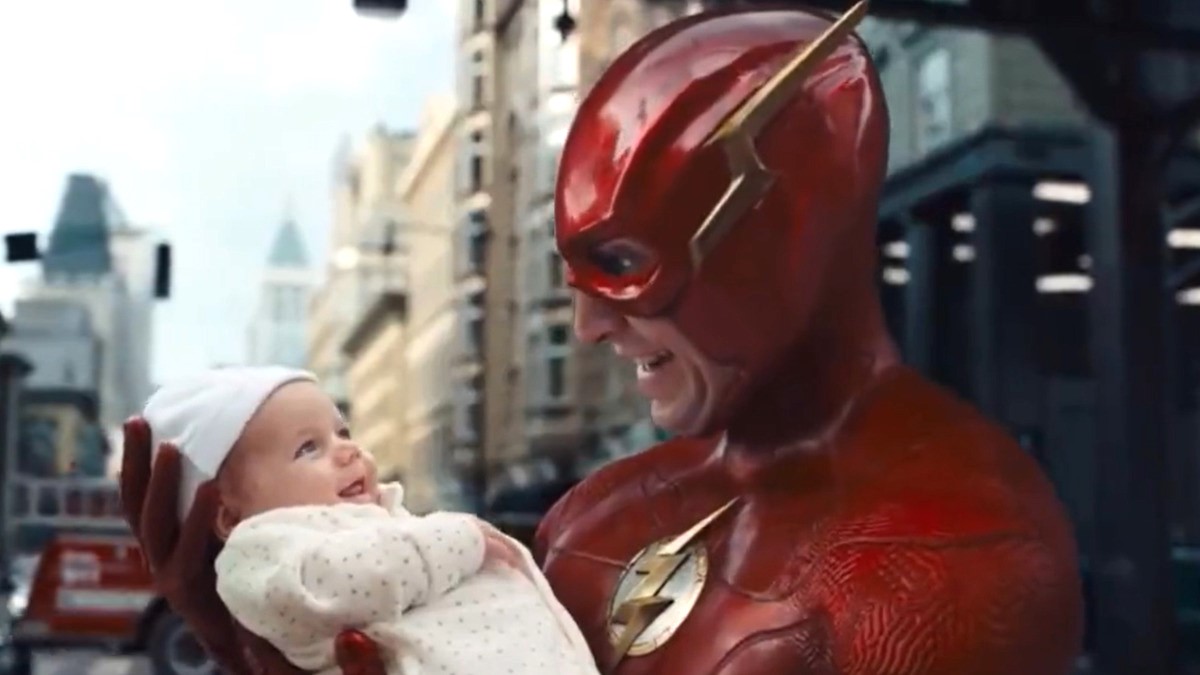To say The Flash bombed at the box office is a bit of an understatement.
The film cost around $200 million to make, and anywhere between $70 million and another $200 million to promote. Now, The Flash is leaving theaters with a worldwide haul of only $267.2 million as of July 16 — meaning it never broke even at the multiplex. Basically, Warner Bros. Discovery totally lost its shirt, and it’s hoping that Barbie can re-seam it as fast as possible.
To incentivize people to buy The Flash on digital and 4K, director Andy “the CG is supposed to look that way” Muschietti has released a few deleted scenes that see the crossover narrative adding Tom Hanks and Teenage Mutant Ninja Turtles to its list of references.
Originally pulled from TheFlashFilmNews on Instagram, some of the deleted scenes have made their way to Twitter. See below:
The first clip shows the two Barry Allens walking through Bruce Wayne’s Hall of Armors, which was first introduced in Tim Burton’s 1989 Batman film. Younger Barry puts on some armor and compares himself to a “Teenage Mutant Ninja Turtle,” which we believe is a sly reference to not just the overall franchise, but specifically to the third Ninja Turtles film, where they go back in time to feudal Japan. We appreciate the deep cut, but we’re also fine with the scene being cut since it’s pretty annoying.
The next scene shows the two Barrys and Bruce Wayne (Michael Keaton) preparing to electrocute Older Barry in the hopes of getting his powers back. Younger Barry once again won’t stop yapping, and he wonders whether they need a wet sponge to centralize the electrical shock — by referencing the Tom Hanks film The Green Mile.
Based on the book by Stephen King, The Green Mile showed what would have happened in the old days if you put someone in the electric chair without a wet sponge on their head — they would catch fire and cook right in front of you. (Poor Eduard Delacroix. He just wanted to be friends with mice.)
Again, kind of a deep cut that would take people a while to parse. Since you can’t pause a film in a theater, audiences were likely to dismiss whatever Young Barry was saying as nonsense and move on with the story. So we also understand why this scene was cut.
Still, it’s instructive to see the kind of jokes Muschietti was trying out while making The Flash, as it reminds people that the film — despite having its share of emotional turmoil — is first and foremost a comedy. That’s why we still consider it one of the better DCEU films: It basically has the same tone as Jim Carrey’s The Mask from 1994. It’s a wacky, live-action cartoon. Thus, rubbery CG and a convoluted plot that constantly references other movies aren’t exactly make-or-break issues.
This is a film in which the ending credits play over a slow-motion cartoon dog falling out of a building. It’s goofy, and it means to be. Perhaps if the marketing had leaned into the true spirit of this thing, audiences would have had a better handle on the kind of movie they were going to see. (One where The Flash, hovering thousands of feet above the ground, pushes a falling baby out of the way to eat a burrito from a falling microwave.)
We don’t begrudge the people who didn’t see it, since Warner Bros.’ non-reaction to Ezra Miller’s completely unacceptable behavior was a punk move. But don’t be surprised if The Flash becomes a streaming cult classic for people who need more Road Runner antics in their lives.

